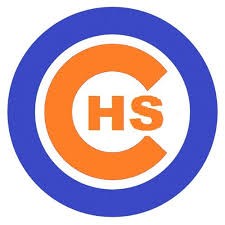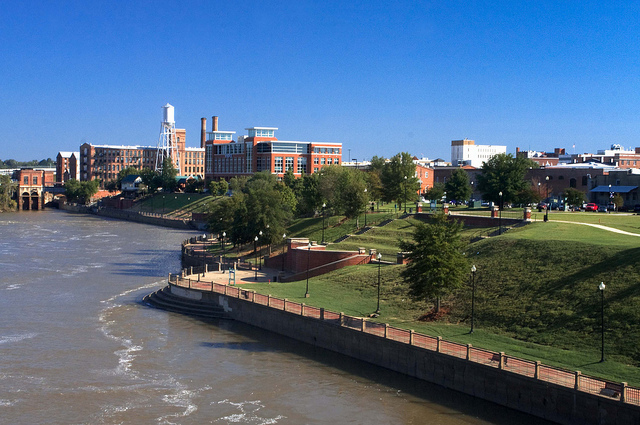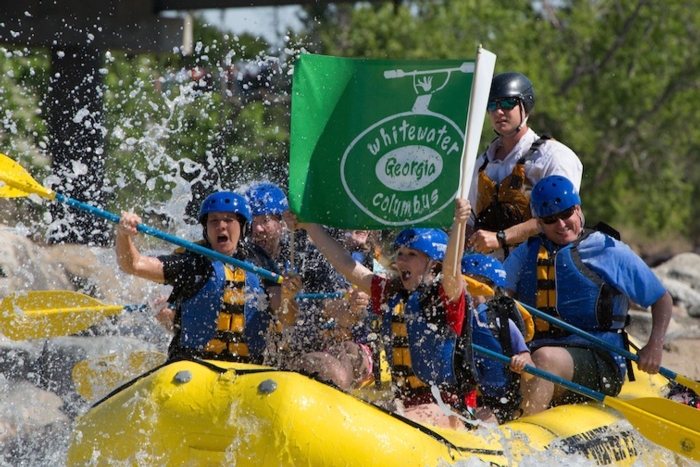Columbus Today
If you have not spent time in Columbus since we graduated in 1969 or if your visits have been infrequent, you may have a hard time recognizing the city you knew in high school. This is especially true in the downtown. Here are some of the things you'll find in Columbus today that may surprise and delight you.
A vastly changed downtown
One of the keys in the changes downtown (or Uptown, as some call it), is the investment by the W.C. Bradley Co. And a key figure in those investments is Mat Swift, who is married to one of our classmates, Mary Lou Crawford Swift. On Mat’s retirement, the Columbus Ledger-Enquirer looked back on downtown’s changes . . . and Mat’s role in its turnaround.
Here’s another overview of the changes in downtown Columbus, from 2015. One of the surprising changes is the growth of tourism, fueled by Whitewater Columbus, the National Infantry Museum and the lively downtown. Here’s how one restaurant owner described how fast things have changed: "I would go into my businesses and 80 percent of the people that walked in the door, I would know them. . . . . Now I don't even rec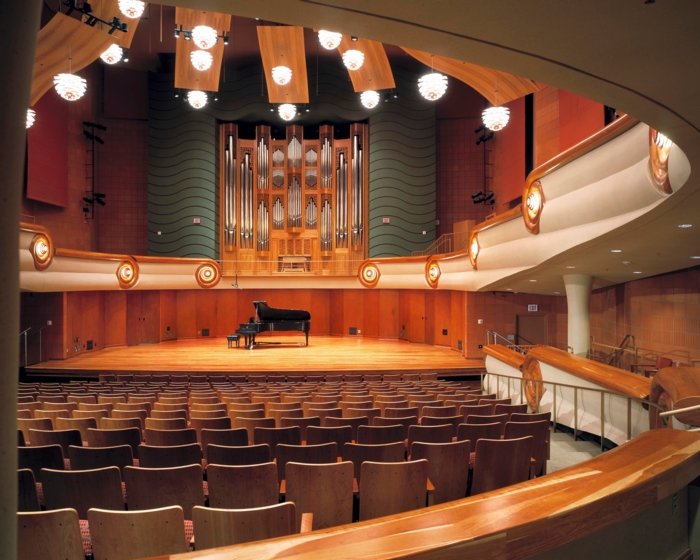 ognize 20 percent.”
ognize 20 percent.”
And the changes aren’t just on Broadway anymore. In recent months, 12th Street, between 1st and 2nd Avenues, has developed its own restaurant row, as this article explains.
The downtown renaissance isn't inspiring just people in Columbus. It is starting to attract attention from other cities. Read this glowing article from the Montgomery Advertiser about how a trip to Columbus inspired city leaders in Alabama. And speaking of glowing, take a look at what a visitor from Chattanooga wrote about visiting Columbus.
Still having trouble visualizing the changes? Then spend a few minutes with this video called, appropriately, "Amazing Columbus."
One of the surprising new assets in Columbus is its thriving arts community. You may remember the Springer Opera House. But the Springer has now been joined by the RiverCenter for the Performing Arts, which functions as a regional performing arts center (with spaces for classical music, traveling theater companies, popular music groups, and comedy shows) and the home of Columbus State University’s music department. Here is an interview with the executive director of the RiverCenter, talking about what makes the RiverCenter special . . . and what it says about the Columbus area.
Maybe the greatest surprise is Whitewater Columbus, the longest stretch of urban whitewater in the world. Wait. Whitewater? In Columbus? As it turns out, Columbus has always had impressive rapids, which create the churning water that kayakers love. But for most of the city’s history, the rapids were hidden under dams. The dams were eliminated in 2013 and whitewater is churning once more in downtown Columbus … to the delight of enthusiasts from around the world. Read all about it here.
The story behind the creation of Whitewater Columbus is so amazing that a full-length documentary has been made of it. If you want to see the story behind this great civic project, you can purchase the documentary.
And speaking of great projects, the building of the RiverCenter, the movement of Columbus State University into downtown, and the rebirth of downtown Columbus is such a great story that a multimedia book has been created about it. It’s designed for Apple devices, so if you have an iPad, iPhone, or Mac, you can download and read it (and view the videos and hear the audio content). And here’s a surprise: It was created by one of our classmates, Otis White. You can purchase “The Great Project” from the Apple bookstore.
Other attractions downtown
The Coca-Cola Space Science Center. This learning center and science museum is run by Columbus State University and located on Front Avenue. Its primary purpose is to teach schoolchildren about science, math and technology. But there are things there that will appeal to adults, as well. Among other things, you can experience what it's like to be aboard a space shuttle, from blastoff to docking, with a new simulator. 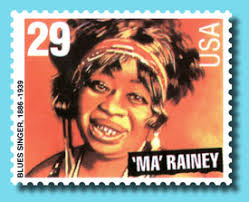
Ma Rainey House and Blues Museum. If you are a fan of music and, in particular, the blues, you'll want to visit the Gertude "Ma" Rainey House at 803 Fifth Avenue. A Columbus native, Ma Rainey was a towering figure in the development of the blues. In her heyday, from 1900 to about 1930, she recorded and toured constantly, performing with artists like Louis Amstrong, Bessie Smith and Thomas A. Dorsey and is honored today in the Blues Hall of Fame, the Rock and Roll Hall of Fame and the Georgia Music Hall of Fame. At her house, where she died in 1939, you can learn about Ma Rainey and also about the rich history of the blues in the Columbus area.
The Bo Bartlett Center. On the downtown campus of Columbus State University is a large gallery space that's named for Columbus' most renown painter, Bo Bartlett. You'll see Bartlett's large-scale works (he's one of America's foremost realistic painters) and works by other modern painters. You can learn more about Bo Bartlett and his work (including, now, a movie) by watching this interview with him.
National Civil War Naval Museum. If you remember this museum from 1969, you probably remember it as the Confederate Naval Museum on Victory Drive. It was under a long shed and consisted mostly of a Civil War gunboat hull that had been dredged up from the bottom of the Chattahoochee River. Well, it has changed, growing much larger and more comprehensive (with artifacts from both the Union and Confederate Navies) and has moved indoors. If you are a Civil War buff, you'll find a lot here to explore.
Attractions elsewhere in Columbus
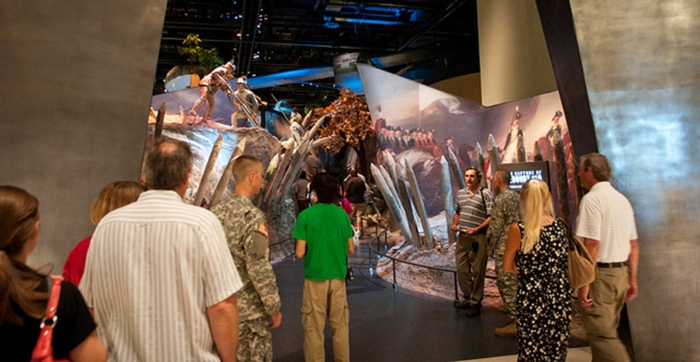
National Infantry Museum and Soldier Center. This is the new pride of Columbus, a nationally acclaimed museum that tells the stories of Army infantry soldiers from the American Revolution to the present. Dedicated in 2009, it sits on a 155-acre campus in South Columbus near Fort Moore. The museum tells its stories using film, combat simulators and interactive displays and concentrates on four eras: World War I, World War II, the Cold War and today's world. Since its dedication, the National Infantry Museum has received rave reviews, including USA Today's Readers Choice Award for best free museum in 2016. You don't want to miss it.
Oxbow Meadows Environmental Learning Center. If you'd prefer to spend time out of doors learning about the environment, visit this branch of Columbus State University in South Columbus. Its speciality: Teaching about plants and animals native to the Columbus area. You can learn more about this remarkable facility here.
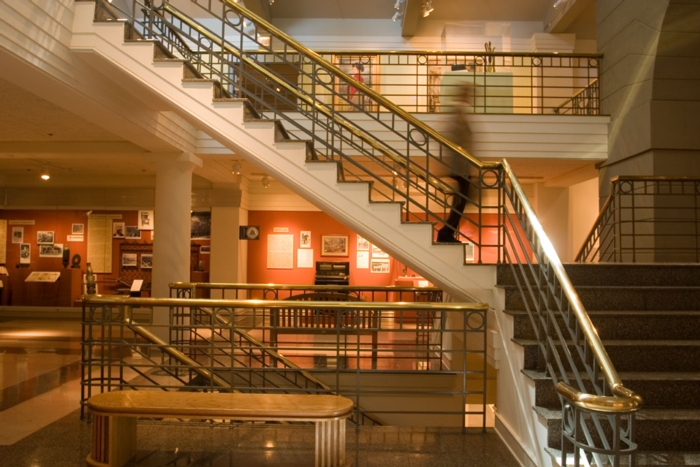
Columbus Botanical Garden. While you're out of doors, consider paying a visit to the 35-acre botanical garden in North Columbus, opened in 1999. You can learn about gardening, talk a walk in the woods, and learn about bird watching.
Columbus Museum. You probably remember the old Columbus Museum. When we were in elementary school and high school, we went on field trips to the museum in Wynnton, which was located in a house once owned by industrialist W.C. Bradley. But if you haven't visited the museum since 1969, you don't know this Columbus Museum. In the 1980s, the museum was more than doubled in size to 86,000 square feet, making it the largest art museum in Georgia outside of Atlanta. The result: the museum's own collection and its space for temporary art exhibits were vastly expanded. It also has a well-regarded section focusing on the history of the Columbus region. One of our classmates, Dan Amos, has been a major influence at the new Columbus Museum in recent years. You can read about some of Dan's work at the museum in this article. NOTE: The Columbus Museum is undergoing extensive renovations and will not be open for our 55th Reunion. Curious about what it will look like? Visit here for a preview.
Photo credits (from top): Visit Columbus GA; Columbus State University; Whitewater Columbus; GeorgiaInfo; Jeremy Wilburn; and Visit Columbus GA.

